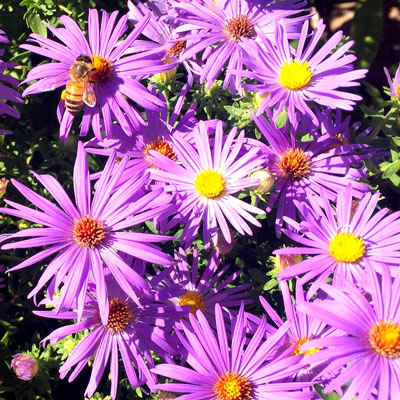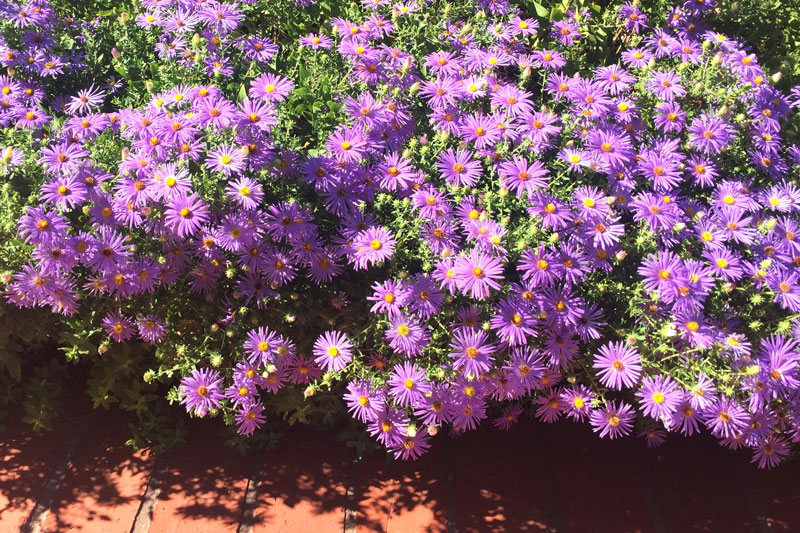Fall Aster – Unique by several measures
I chose my title carefully. This sweet perennial treasure sets itself apart in some very nice ways:
• It’s one of the few asters or aster-like plants that actually thrives in Texas conditions. Most are reserved for northern gardens.

• It’s one of very few fall-flowering plants with blooms that are purplish-lavender. Most are the traditional “fall colors” of reds, oranges, golds and yellows. This one stands out. The perfect complement to mums and other traditional flowers of fall.
• It’s one of the best-adapted plants for Texas gardeners. It’s hardy to Zone 4 (way north of us here in Texas), and it grows in almost any kind of soil and in sun or shade. It’s deer- and rabbit-resistant, yet bees and butterflies love it.

Botanically it’s Symphyotrichum oblongifolium.
Mature height: 24-30 inches, but looks better if kept shorter. (See pruning notes below.)
Mature width: 24 inches.
Grows well in full sun but tolerates shade. May become a bit open and lanky if shade is excessive.
Propagate by division in late fall or very early spring as plants start to grow.
Prune in late fall to remove all of current season’s stems and spent flower clusters to within 2 or 3 inches of the soil. Next year’s plants will be visible at bases of plants by that time.
Pinch-prune in late May or early June to remove several inches of new growth (no more than 30 to 40 percent). That will force plants to send out side shoots. You will get far more branches, buds and blooms come fall.
I have noticed that my plants’ blooming dates have varied from late September through October over the years.
The reason I feature the plant early for you is so that you will be watching for it in nurseries over the next several weeks. Fall asters aren’t commonly sold. When you see them, you want to grab the ones you need. They may not be there the next day. Some others of us are watching for them, too.
